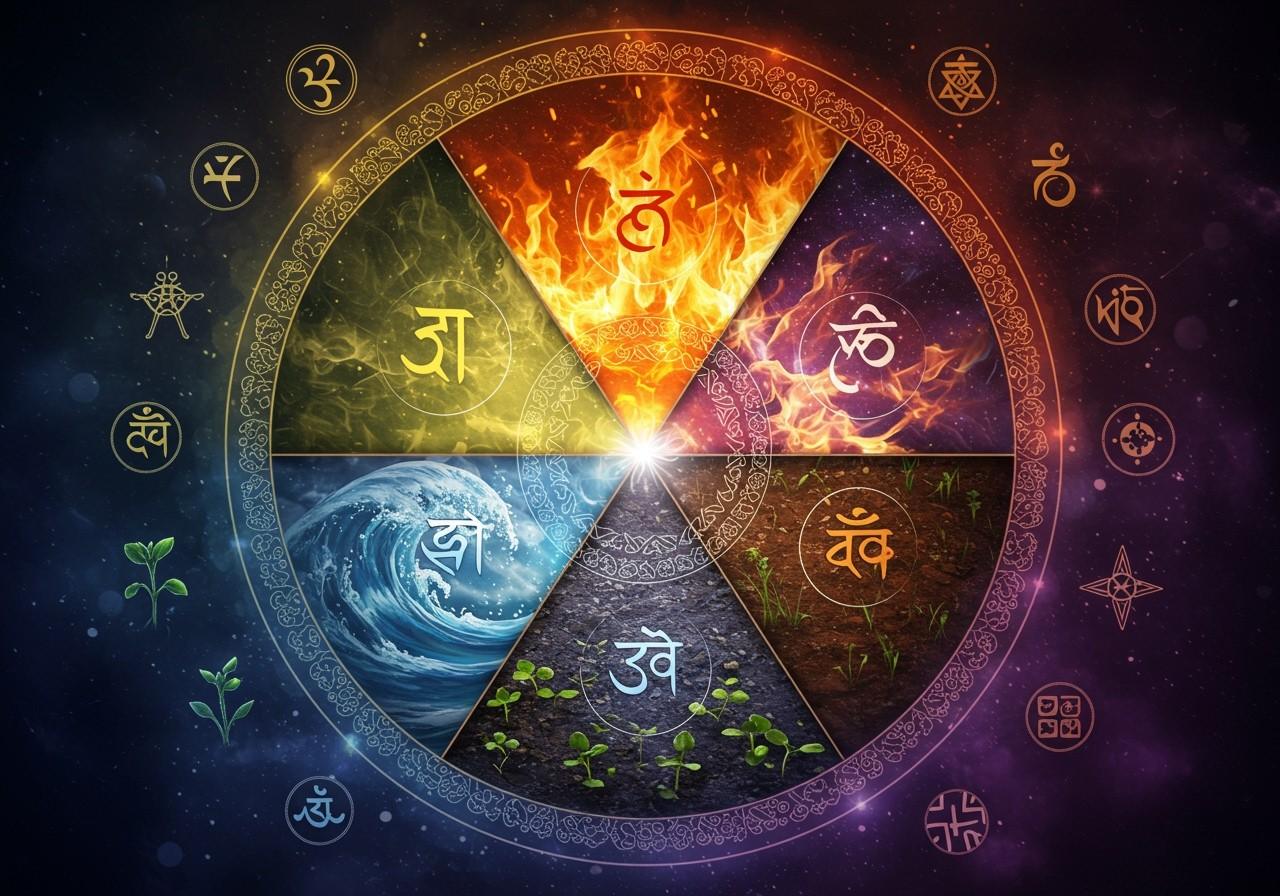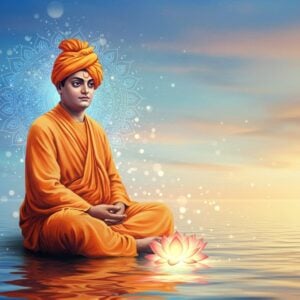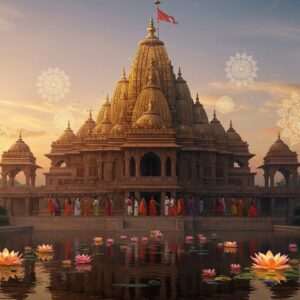
Embark on a captivating journey into the world of Pancha Bhuta, the five elements fundamental to numerous ancient philosophies. These elements—Earth, Water, Fire, Air, and Ether—hold profound cultural significance in India, shaping beliefs and practices. Exploring their interpretations across various cultures and languages enriches our understanding of Indian traditions and their relevance in contemporary life. For a deeper dive into Hindu temple architecture and sacred spaces, explore these resources: Hindu Temple Architecture and Key Elements of Traditional Hindu Architecture.
Pancha Bhuta in Hindi
The Hindi interpretation of Pancha Bhuta is deeply embedded in cultural significance, with each element carrying profound meaning:
- Prithvi (Earth): Symbolizes stability and nourishment, representing the ground that supports and sustains us. It is often associated with Mother Earth and her life-giving properties.
- Jal (Water): Essential for rituals and daily life, water embodies purity and flow. It plays a vital role in ceremonies, symbolizing life and cleansing.
- Agni (Fire): Revered for its purifying qualities, fire is central to religious ceremonies. It represents transformation, energy, and the destruction of impurities. You can find high-quality camphor for your fire rituals at Poojn.in.
- Vayu (Air): Representing the breath of life, air is linked to practices like Pranayama. It is essential for all living beings and symbolizes movement and vitality.
- Akash (Ether): Considered the medium for spiritual connection, ether is the space that unites everything. It represents the vastness of the cosmos and the interconnectedness of all things.
Pancha Bhuta Galu in Kannada
Kannada traditions refer to Pancha Bhuta as ‘Pancha Bhuta Galu,’ offering unique regional interpretations:
- Bhumi (Earth): Crucial for agricultural practices and often depicted in local folklore, Bhumi symbolizes fertility and abundance. It represents the connection between humans and the land.
- Neeru (Water): Revered in Karnataka’s traditional festivals, Neeru embodies life-giving properties and purity. It is used in various rituals and ceremonies.
- Bana (Fire): Prominent in temple rituals, fire symbolizes divine energy and purification. It is seen as a powerful force that transforms and cleanses.
- Gali (Air): Representing life and health, Gali plays a vital role in local health practices. It is associated with the breath and the flow of energy within the body.
- Akasha (Ether): Carrying spiritual connotations, Akasha is often explored in Kannada literature. It represents the boundless expanse of the universe and the spiritual realm.
Pancha Bhuta in Odia
The Odia understanding of Pancha Bhuta integrates these elements into regional beliefs:
- Pṛthivī (Earth): Associated with fertility and sustenance, representing growth and the foundation of life. It is considered sacred and essential for agriculture and well-being.
- Jala (Water): Central to ceremonies and daily life, Jala represents purity and cleansing. It is used in rituals for purification and is essential for sustaining life. Find premium Gulab Jal for your rituals at Poojn.in.
- Agni (Fire): Employed in religious offerings and purification rituals, symbolizing transformation and divine energy. It is seen as a sacred element that connects the physical and spiritual realms.
- Marut (Air): Representing the breath of life and vital energy, crucial for health and well-being. It is often associated with the wind and its life-sustaining properties.
- Aakash (Ether): Representing the infinite space that connects everything, carrying spiritual significance. It is seen as the realm of the divine and the source of all creation.
Pancha Bhuta Across Cultures: A Broader Perspective
The concept of five elements appears in various cultures, offering explanations for the nature and complexity of matter. Ancient civilizations like Greece, Angola, Tibet, India, and Mali had similar elemental systems, with variations in names and interpretations. The oldest recorded five-element system originated in ancient Babylon, comprising earth, sea, fire, wind, and sky.
The Chinese Wu Xing incorporates Metal (or Gold), Wood, Water, Fire, and Earth, linking these elements to various aspects of life, including medicine, art, and spirituality. The Japanese Godai includes Earth, Water, Fire, Wind/Air, and Void (or Sky/Heaven), drawing from Indian Vastu Shastra and Buddhist beliefs.
In Hinduism, the Pancha Mahabhutas guide yogis towards spiritual enlightenment. Buddhism and Jainism also utilize five-element concepts to explain existence and philosophical principles. Explore more about Maha Shivaratri, a significant festival related to these elements, in our Maha Shivaratri 2025 guide.
Connecting with Indian Traditions through Pancha Bhuta
Understanding these elements across cultures strengthens our connection to Indian traditions. From Hindi’s ‘Prithvi’ to Kannada’s ‘Bhumi’ and Odia’s ‘Pṛthivī,’ each term embodies unique cultural significance. The enduring relevance of Pancha Bhuta bridges ancient wisdom with modern life, fostering a deeper connection with nature and self-awareness. Learn more about the Hatimura Durga Temple and its celebrations of the divine feminine at Poojn.in. You can also explore various Hindu architectural styles in our comprehensive guide: Hindu Architecture Styles. For insights into how tradition meets modern design in Hindu architecture, visit Hindu Architecture: Tradition Meets Modern Design.


